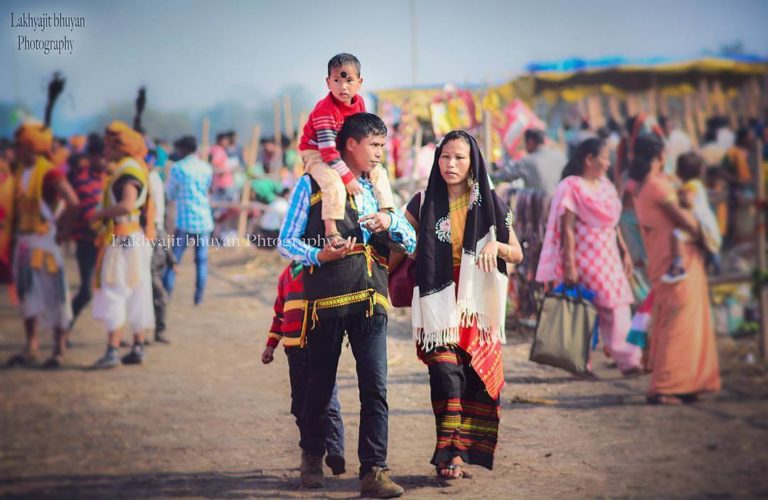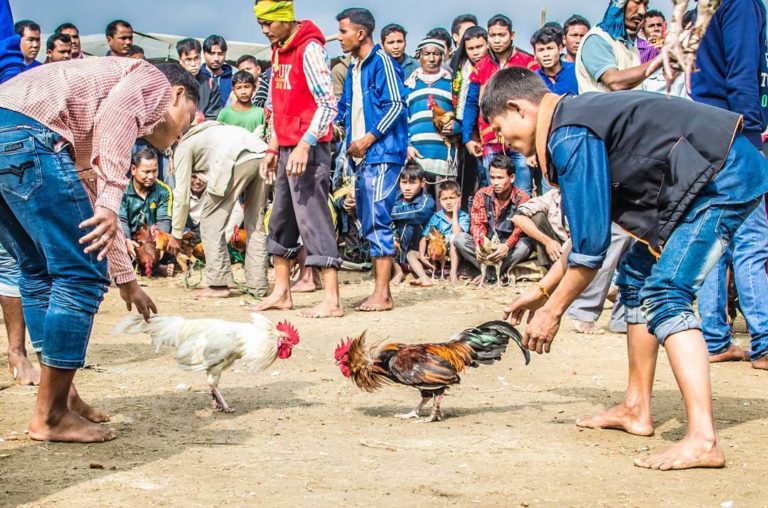The Jonbeel Mela, which started sometime around 15th century AD has been the 'talk of the town' ever since it’s inception. The credit for bringing this tradition to practice goes to the Ahom Kings who first organized it in order to have general discussions about the then economic, political, and social conditions. Over the centuries, the Jonbeel Mela has attained seemingly great heights in terms of popularity and participation. After all, it is one of the most unique and also one of the oldest fairs in India which has been kept alive by the people of Assam. You might be thinking what’s unique about this fair? Well, it is the only fair where you can experience the barter system in India.
This iconic fair earmarks people’s intent to preserve age-old traditions and customs. The 3-day long affair, which is usually held during the Magh Bihu (in January) at the historic Dayang Belguri in Jonbeel, gets its name from a lake next to the main ground. During these three days, people from the plains and the hills come together and gather at this place to trade goods that cater to their needs. An Agni puja is performed just before the fair begins to ensure the well-being of the people. A community fishing is also held at the Jonbeel lake to mark the beginning of the fair and to promote solidarity and friendship among the people. The main theme of the fair is communal harmony and brotherhood that needs to be preached among the various tribes and communities of Northeast India.

Once you reach the main venue, you will be awestruck to see people belonging to varied tribes and places exchange commodities with each other. Trust me, it will be a scene to behold and cherish for a long time. People from hills bring important herbs, exotic spices, turmeric, ginger, and fresh fruits in hope to trade them with rice, local fish, pithas, and other goods. The main participants of the mela are the people from Karbi Anglong and Jaintia Hills who come down from the hills and gather at the mela to trade goods which cannot be found in the cold, hilly areas. Well, they are not the only participants in the Jonbeel Mela as over ten thousand villagers from every possible place in Assam come here to be a part of this centuries-old tradition. There are makeshift huts and cottages made out of bamboo where the villagers can stay until the end of the mela. During the fair, the king of the Tiwa tribes, known as Gova Raja makes a visit to the mela along with his courtiers to collect revenues from the people as part of the tradition. The Gova Raja then, feasts with the people on the banks of the Jonbeel lake and enjoys the evening.
The tribes have something more to offer as they perform their traditional dance, sing songs, organize cockfights and showcase their unique attires to make the atmosphere more lively and entertaining at the same time. The tourists are in for an eventful yet exciting time here, dancing to the tunes of the tribes, witnessing a never seen before the festival and being part of a unique tradition. The best part is the Jonbeel Mela not only promotes trade and commerce, but it seeks to keep alive the spirit of interdependence, harmony, peace, and solidarity among the tribes and the tourists. It also marks the effort of the organizers to bring together a fair carefully crafted with heritage, novelty and people’s age-old belief that dates back to several centuries.
How to Reach: The historic place, Dayang Belguri, where the fair is held, is just 3 kilometers from Jagiroad in Morigaon District and is easily accessible. Public transport to Jagiroad is available from most parts of the state. The nearest airport is at Guwahati which is about 60 kilometers away and the nearest railway station is at Jagiroad itself.
Image by traveller.assam
Image by Lakhyajit Bhuyan Photography



